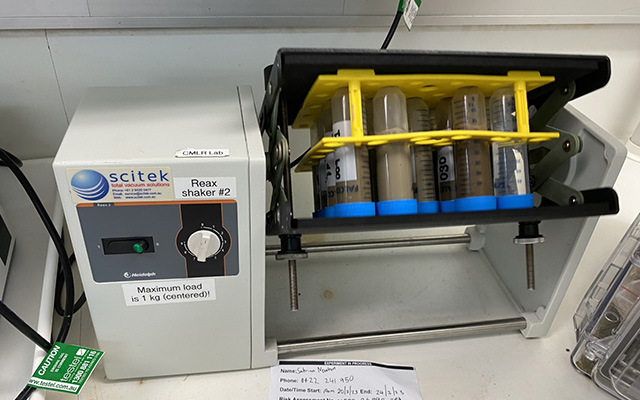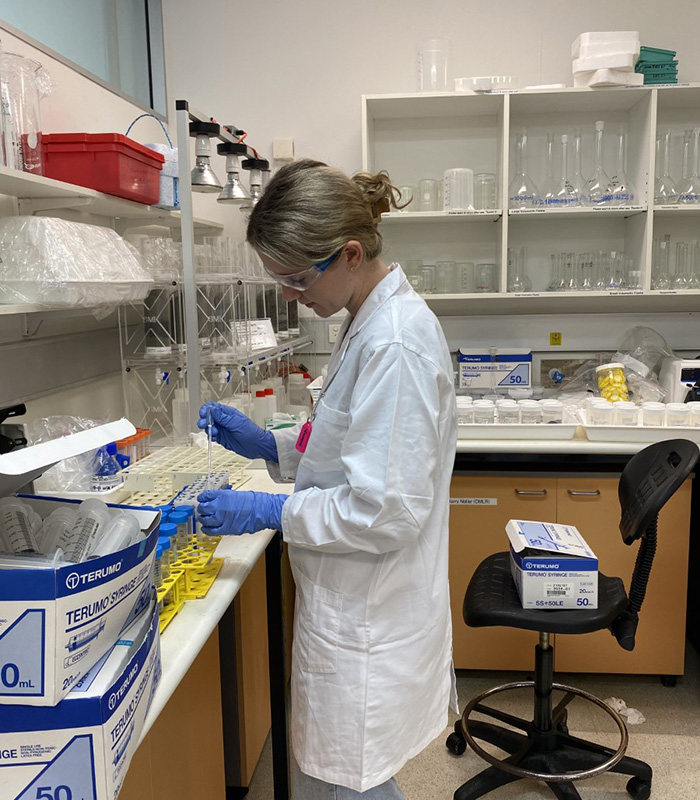Exploring the geoenvironmental characterisation of historic tailings
University of Queensland (UQ) undergraduate student Sabrina Newton from the School of Earth and Environmental Sciences (SEES), shares the progress of her honours research with the Mine Waste Transformation through Characterisation (MIWATCH) group.
For my honours I am conducting geoenvironmental characterisation on historic tailings in NSW, which I collected in late-2022 during field work with the MIWATCH group. As part of my research I am collaborating with Annah Moyo, a Research Officer at the Sustainable Minerals Institute (SMI), to perform the Synthetic Precipitation Leaching Procedure (SPLP) on the sampled tailings.
The sampled historic tailings may contain potentially toxic elements such as lead, zinc, and cadmium, which could pose a risk to the environment and public health if inadequately managed. My research aims to better understand the geoenvironmental characteristics of the tailings with a particular focus on determining the mobility of potentially toxic elements. This will inform future management with respect to remediation options.

The SPLP experiment involves simulating the natural leaching process to determine the potential for heavy metals elution from the tailings and measure the resulting concentrations. Annah and I are conducting the experiments in SMI’s laboratories at UQ’s St Lucia campus using carefully controlled conditions to ensure accurate results.

The outcomes of this research will benefit future policy and management decisions being made in this mining region. It also emphasises the importance of integrated tailings characterisation, for example, can a business case for remining be built if the cost of actively managing contaminated waters in perpetuity is significant? To be able to financially model these answers, data from tests like the SPLP must be gained.
This honours project highlights the critical role that research plays in addressing the legacy of past mining activities and ensuring a sustainable future for affected communities. Our collaboration on this experiment demonstrates the value of interdisciplinary approaches, bringing together expertise from environmental science and mining engineering to tackle complex problems. The outcomes of this research might be used to inform future management and remediation strategies, emphasising the significance of integrated tailings characterisation and the need for accurate data to make informed decisions about managing potentially toxic elements in the environment.
